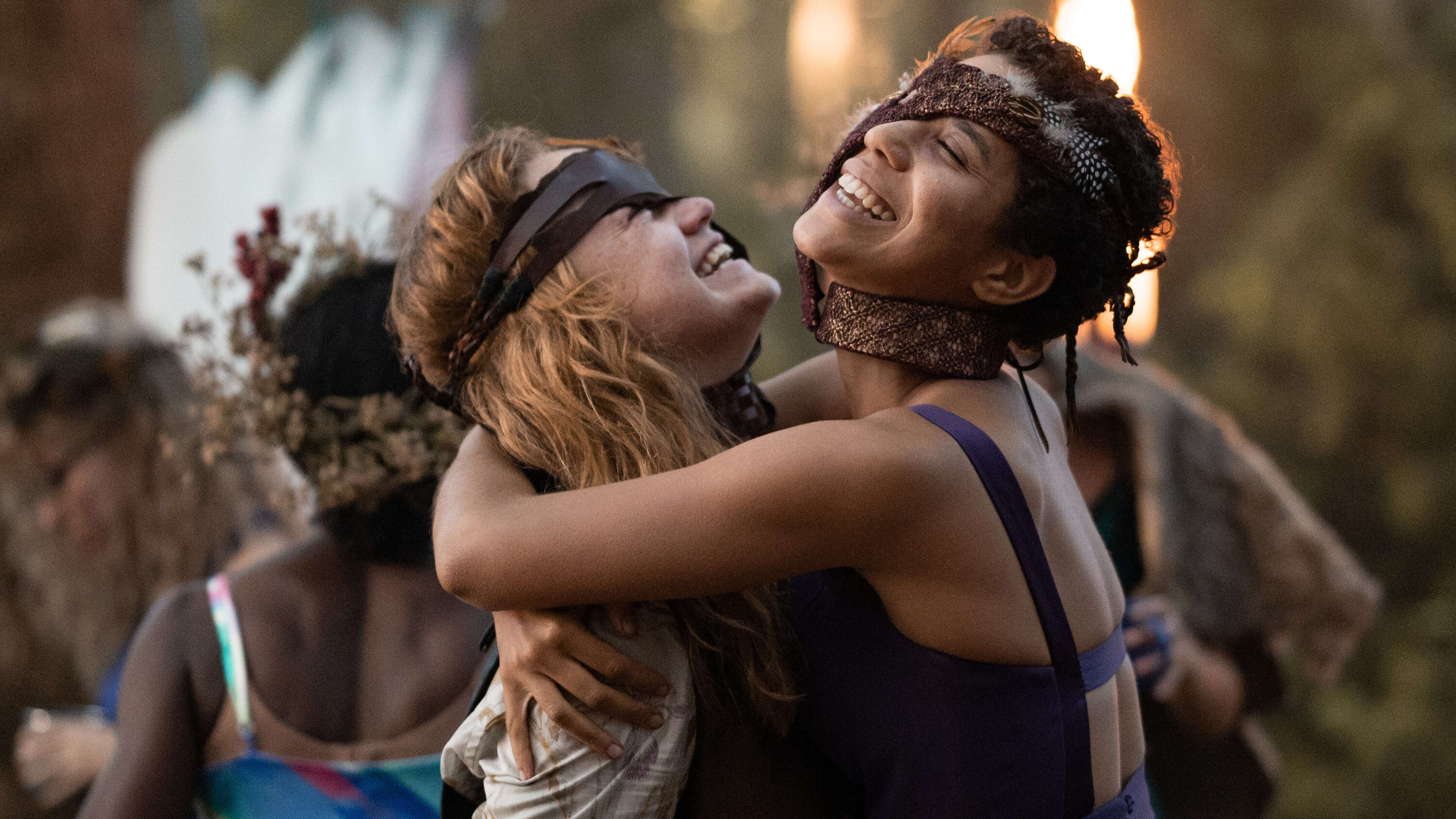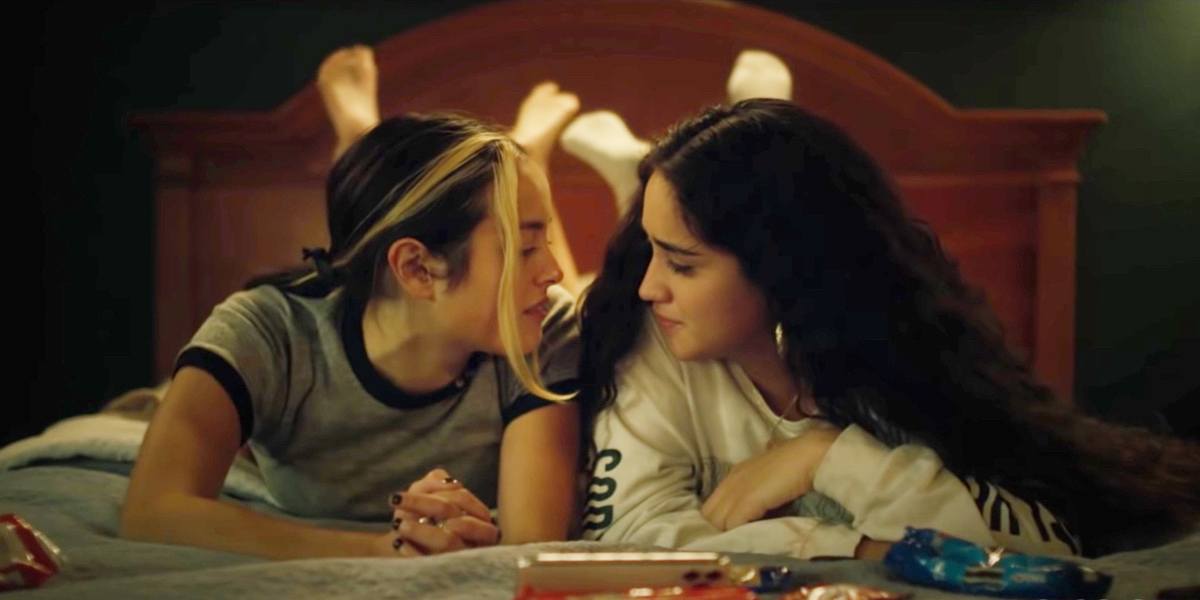by Nathaniel R
 Yellowjackets helped Showtime stay on top in terms of LGBTQ representation
Yellowjackets helped Showtime stay on top in terms of LGBTQ representation
The Gay and Lesbian Alliance Against Defamation has released their annual WHERE WE ARE NOW ON TV report. The report looks at LGBTQ+ representation via series regulars or recurring characters on scripted television shows across the three platforms: broadcast, cable, and streaming. It covers shows airing between June 1st, 2021 and May 31st, 2022. The shows that haven't aired yet are stastically factored in only when casting has been confirmed by content providers (Notably Apple TV+ AND Disney+ declined to confirm when it came to unaired shows) so the report might have discrepancies.
Herewith are 10 notes on the report, in no particular order...
 Motherland: Fort Salem takes place in a female military environment so it messes with heteronormativity at times
Motherland: Fort Salem takes place in a female military environment so it messes with heteronormativity at times
• Showtime is the most LGBTQ+ inclusive cable network with 35 regularly or recurring queer characters. These numbers are largely coming from The L Word: Generation Q, Yellowjackets, American Rust, Billions, and Dexter: New Blood. Freeform which has the series Good Trouble and Motherland: Fort Salem comes in at #2 and F/X is in third place for most inclusive with series like What We Do in the Shadows and Better Things. According to GLAAD these three cable networks have been the most inclusive for several years now and between the three they account for a whopping 50% of all LGBTQ characters on cable.
 Omar & Ander are now in the fourth season of their romance on "Elite"
Omar & Ander are now in the fourth season of their romance on "Elite"
• Netflix is the most LGBTQ+ inclusive of streaming services which is helped in part by their international series like Elite, Young Royals, Sex Education, and Rebelde... though several American series have multiple queer characters (Q-Force, Never Have I Ever, Atypical, Dear White People). HBO Max and Amazon Prime are in second and third place.
• Broadcast has hit two record highs for inclusion with 11.9% of character being LGBTQ, and POC representation at 50% as well. Broadcast and Streaming both saw major increases in POC representation though cable saw a decrease.
• For the first time since 2007 lesbians outnumber gay men as characters in television series across all three types of tv series (though gay men still lead within streaming shows).

• In terms of bisexual representation, female characters continue to be very dominant (124 women vs 50 men and 9 non-binary characters) and streaming has far more bisexual characters than Cable or Broadcast. Unfortunately GLAAD notes that persistent harmful tropes continue to be played out with bisexual characters such as untrusthworthiness, bisexual as mere temporary plot device, or their sexuality being invalidated by their romantic partners.
 With the cancellation of the very diverse Genera+ions, TV lost its only current asexual character Greta (Haley Sanchez)
With the cancellation of the very diverse Genera+ions, TV lost its only current asexual character Greta (Haley Sanchez)
• Asexuality is almost non-existent on television. With HBOMax's genera+ion cancelled but still counting for this report (god, that show was so excellent) there are currently zero asexual characters on TV though there is one in an upcoming streaming series (the report doesn't say which show).

• 36 different series have trans characters for a total of 6% characters identifying as trans. Streaming shows lead in this area.
• Series regular characters with disabilities are at only 2.8% which is a slight decrease from last year. This is well below the statistical % of the population that's living with disabilities. It's worth noting that "disability" is a huge umbrella term and includes not just visible disabilities but struggles like addiction and PTSD as well as people living with cancer or HIV.
 Vincent Rodriguez III and Mark Indelicato play boyfriends on Amazon's "With Love"
Vincent Rodriguez III and Mark Indelicato play boyfriends on Amazon's "With Love" Rushi Kota and Charlie Barnett in NBC's "Ordinary Joe"
Rushi Kota and Charlie Barnett in NBC's "Ordinary Joe"
• Racial diversity continues to be a complicated topic with mixed results in terms of TV representation. Though black representation tends to grow each year on Broadcast television and is currently at 25% (it was only at 11% thirteen years ago when these reports began in earnest), the other two largest racial groups in the US, Asian-Pacific Islander (7% currently vs 3% thirteen years ago) and Latinx (8% currently vs 6% thirteen years ago) haven't seen nearly as much growth indicating that Broadcast networks tend to think of racial diversity as a strict binary between black and white. That's especially strange in regards to the Latinx population in terms of sheer numbers. GLAAD doesn't reference US Census statistics but according to the most recent census, Hispanic or Latinos make up 18.5% of the population (making them grossly underrepresented on TV and in film... though this report doesn't cover film), with African Americans at 13.4%, and Asians at 5.9%. Of course complicating these statistics considerably is that all methodologies have their problems and inaccuracies -- including how the question is posed to respondents in the first place -- and the Hispanic and Latino population contains multiple races. (Overall people who identify as multi-racial is a demographic that's growing quickly, a 276% increase over the past ten years which will make these kind of reports and stats yet more complex in years to come.)

• Finally it's probably worth noting that though women outnumber men in the real world, on Broadcast TV men remain dominant though the gap is closing. ABC is the only network that has more female characters than male characters (52%).
This is of course a much larger topic than this one humble post attempting to summarize a handful or two of the findings. If you're interested you should check out the full report.